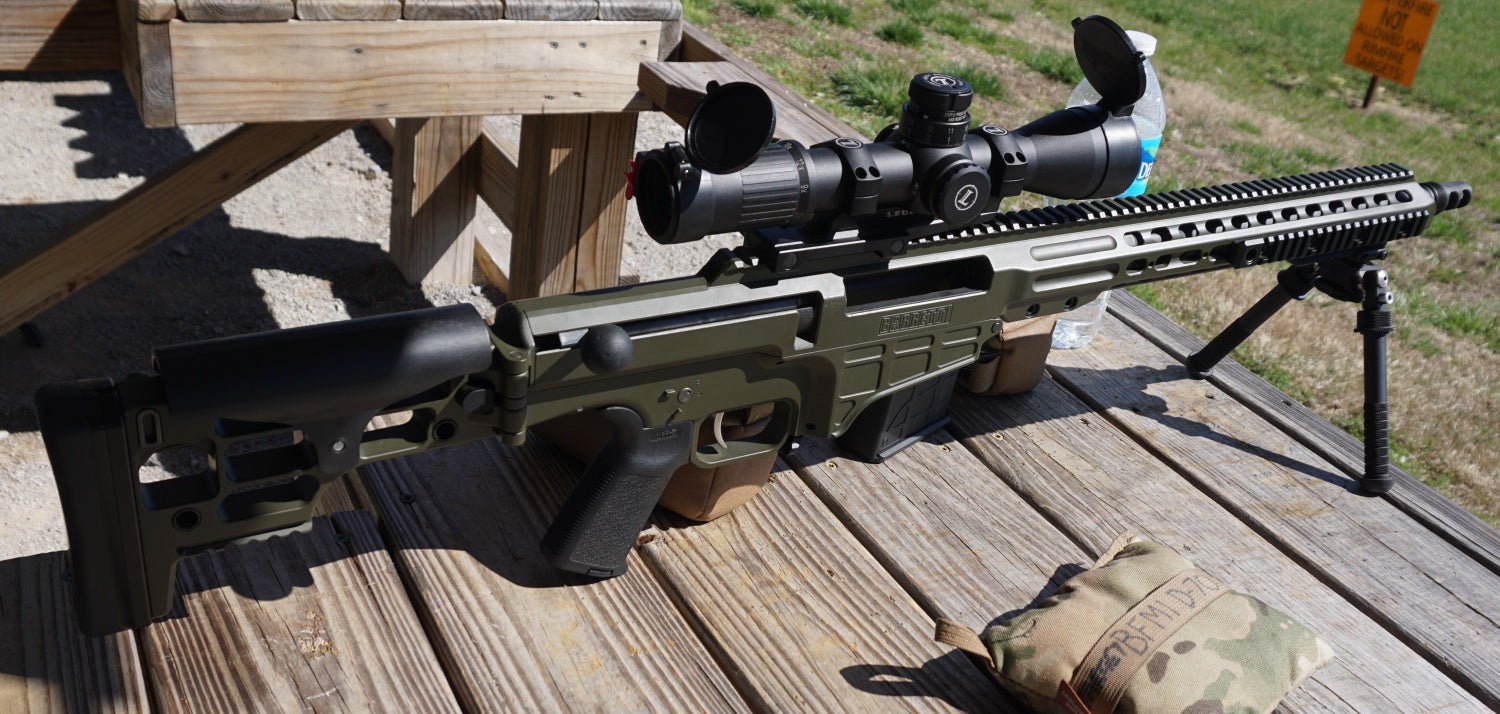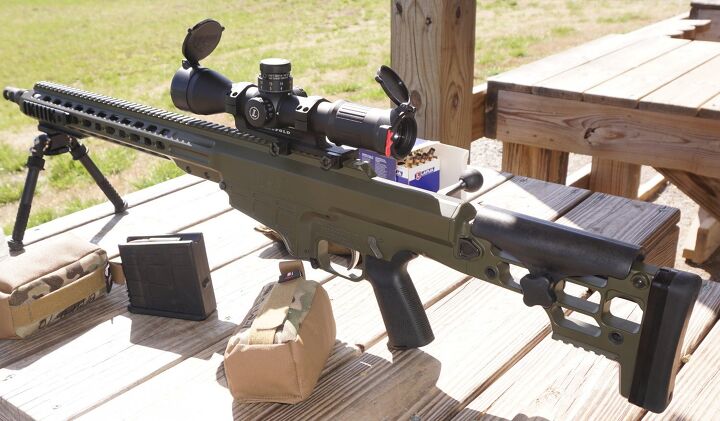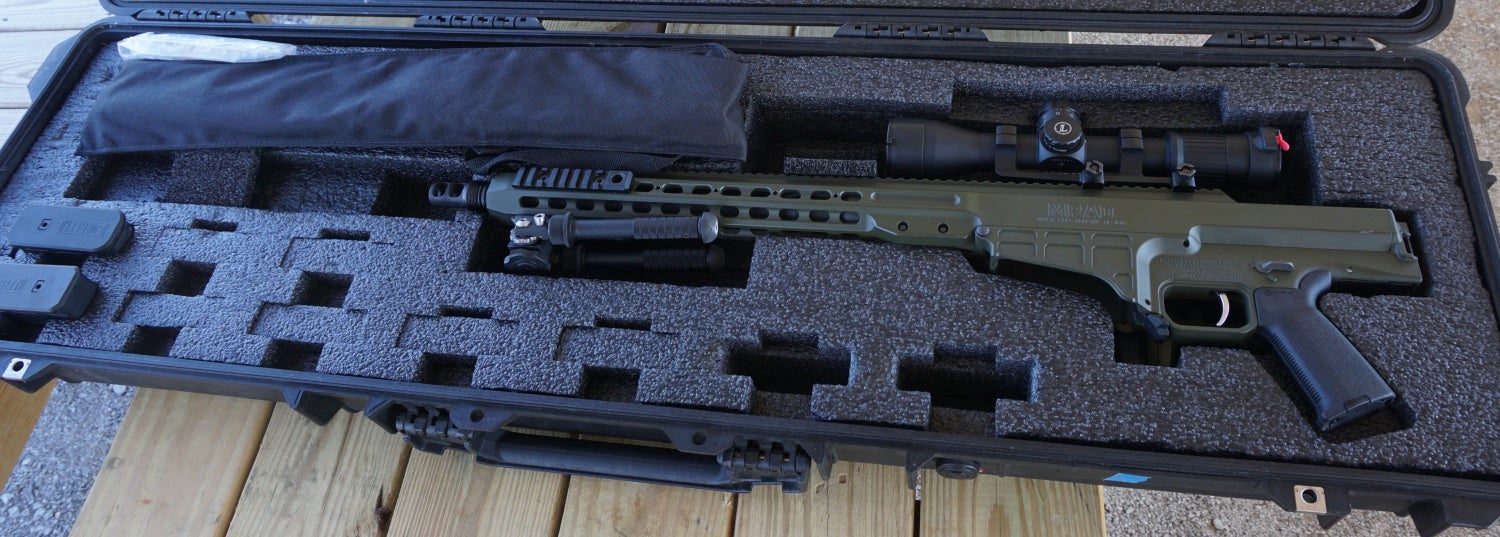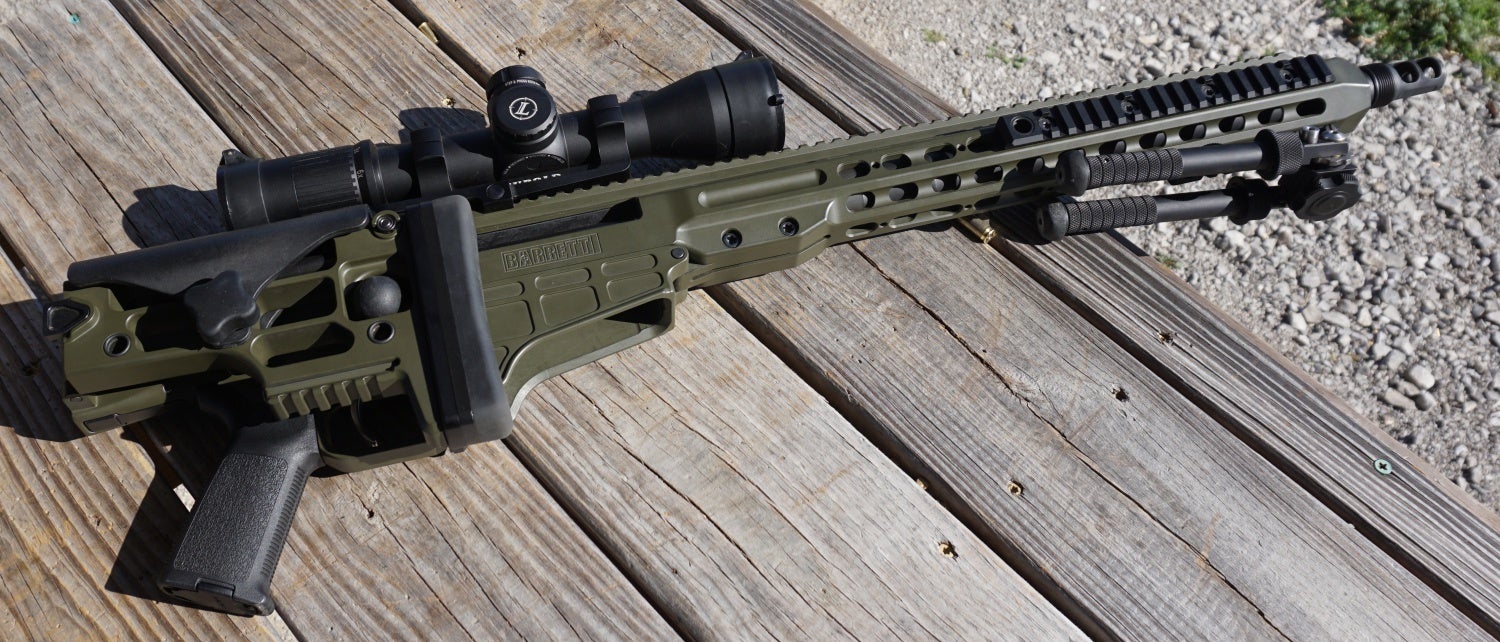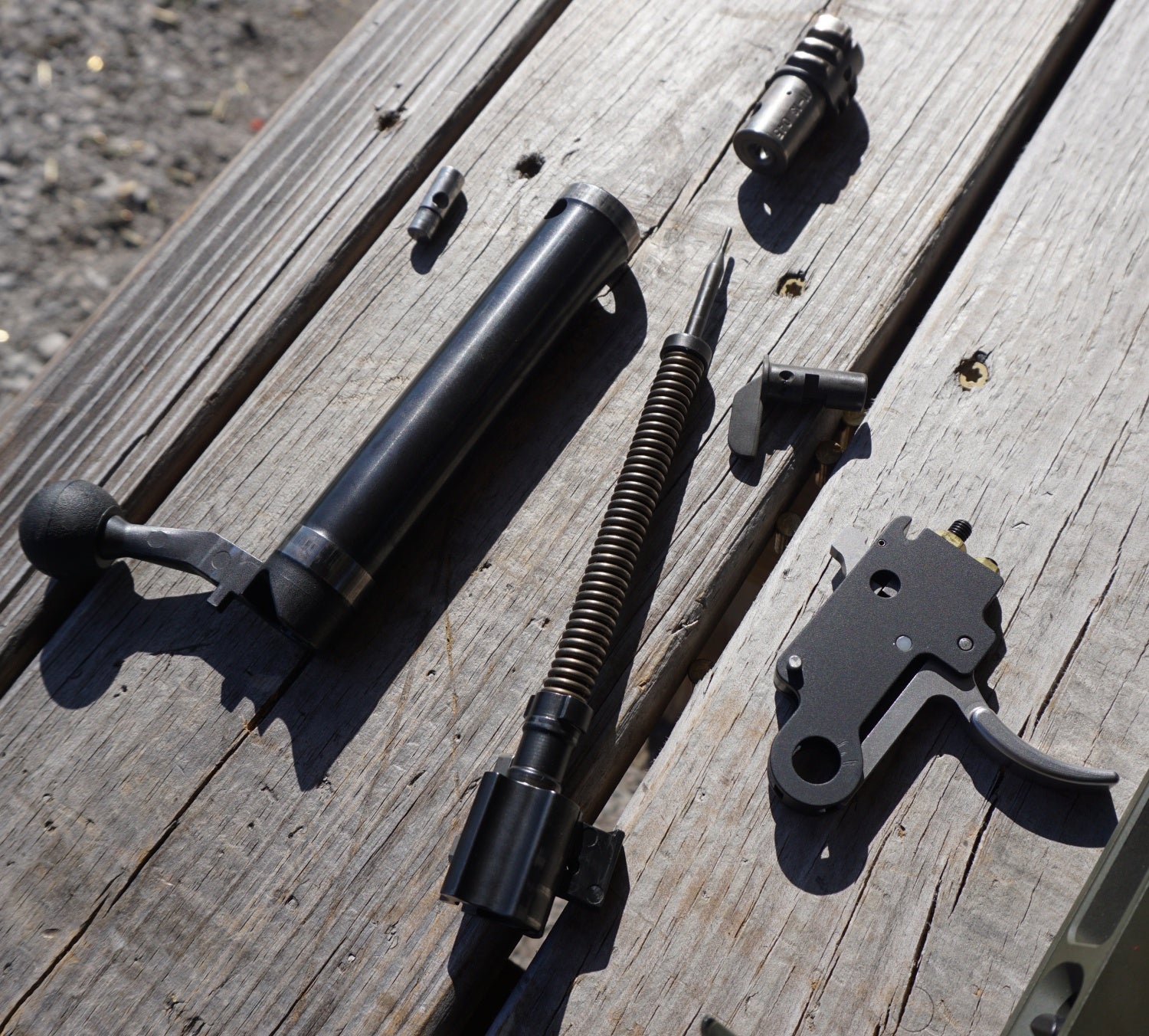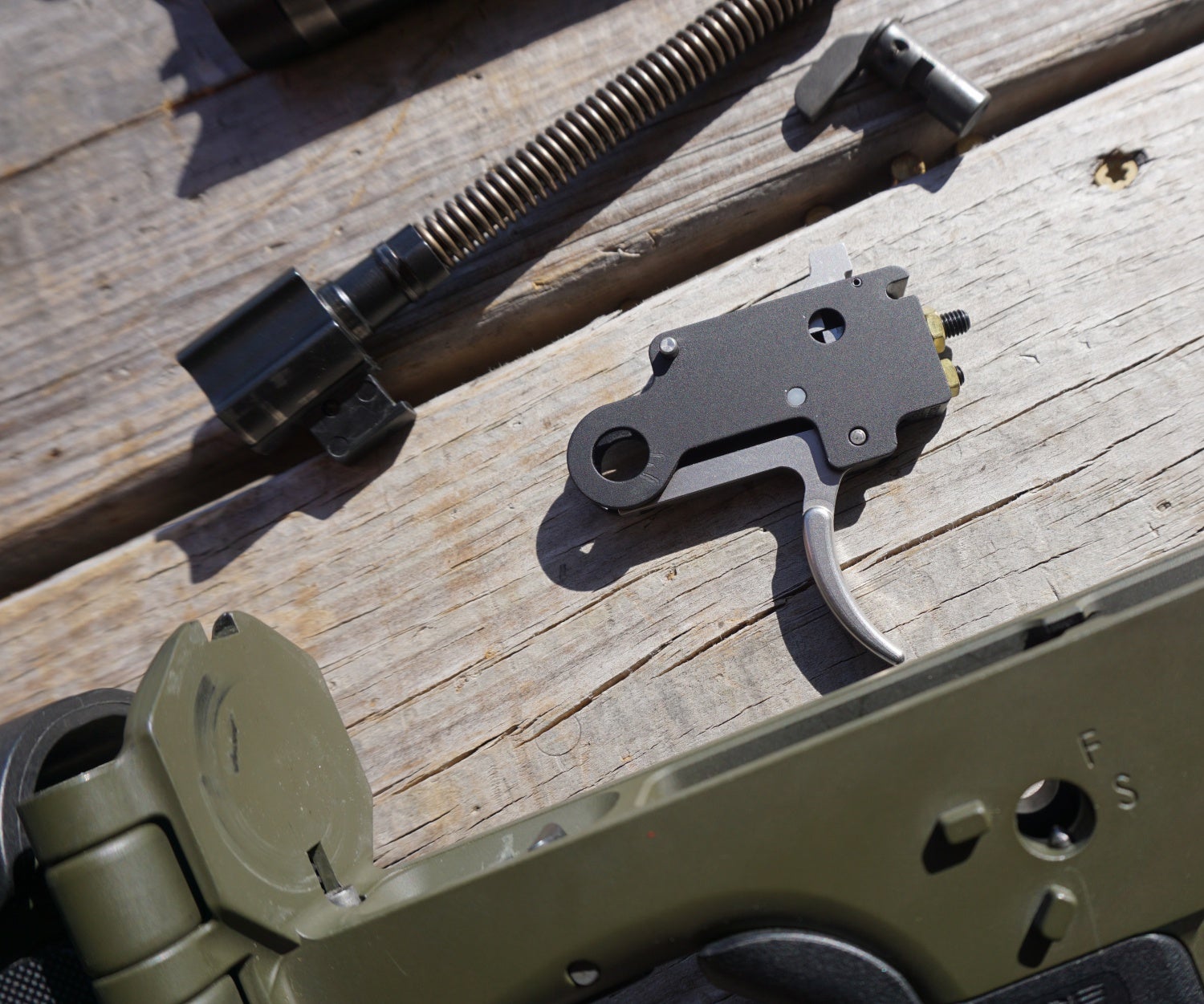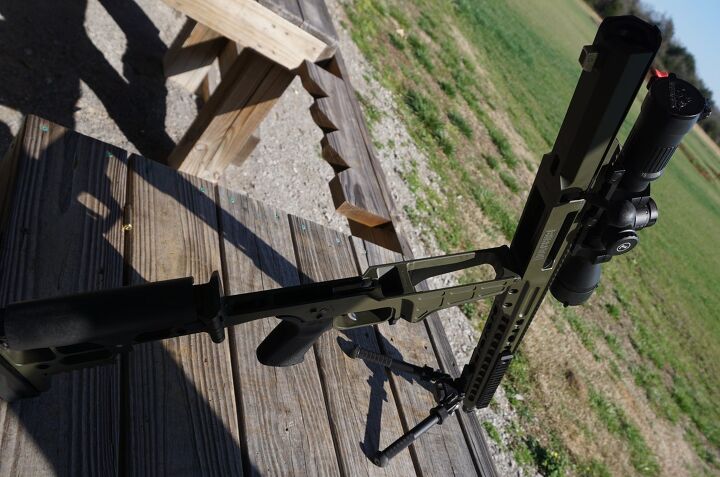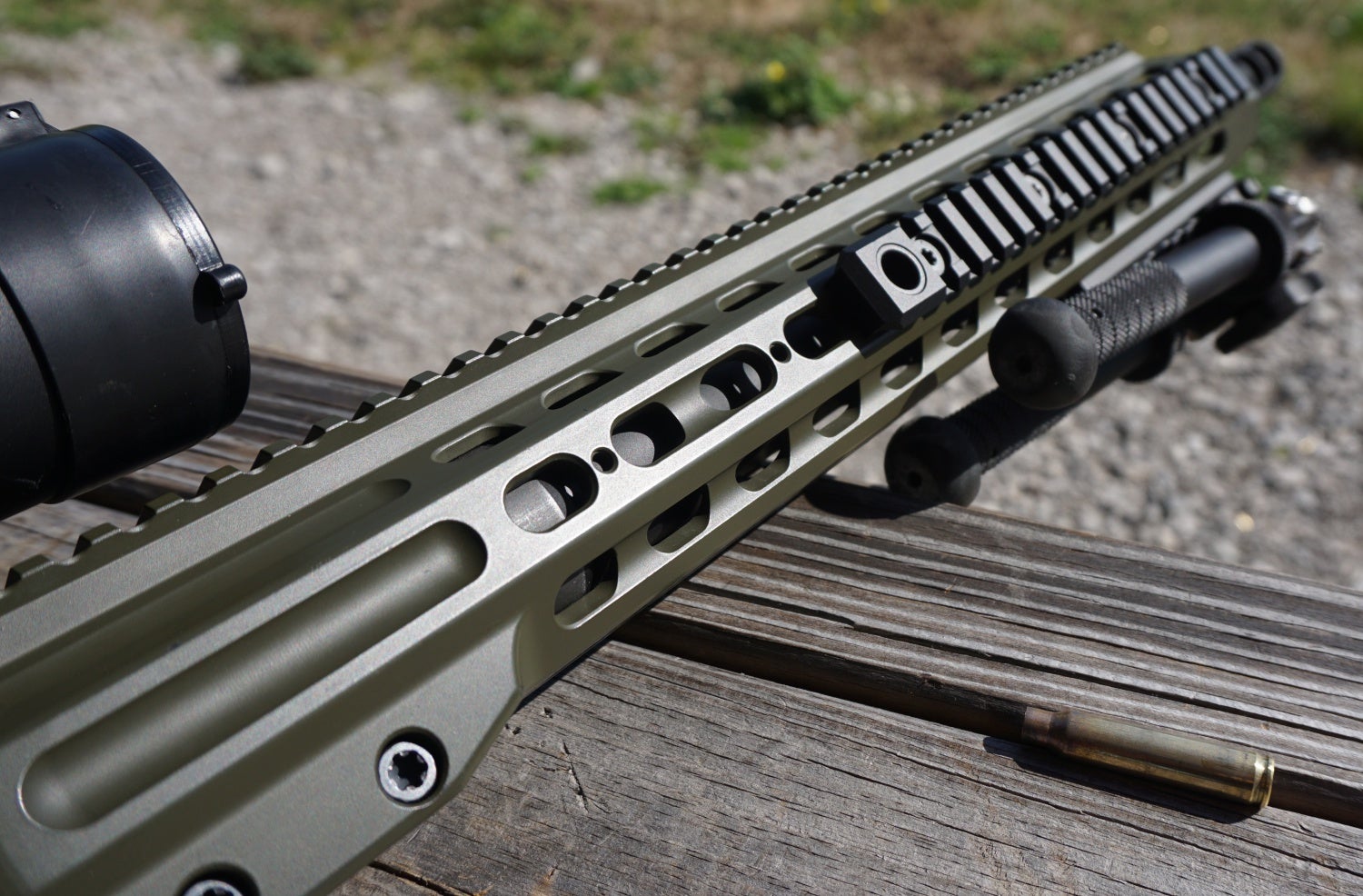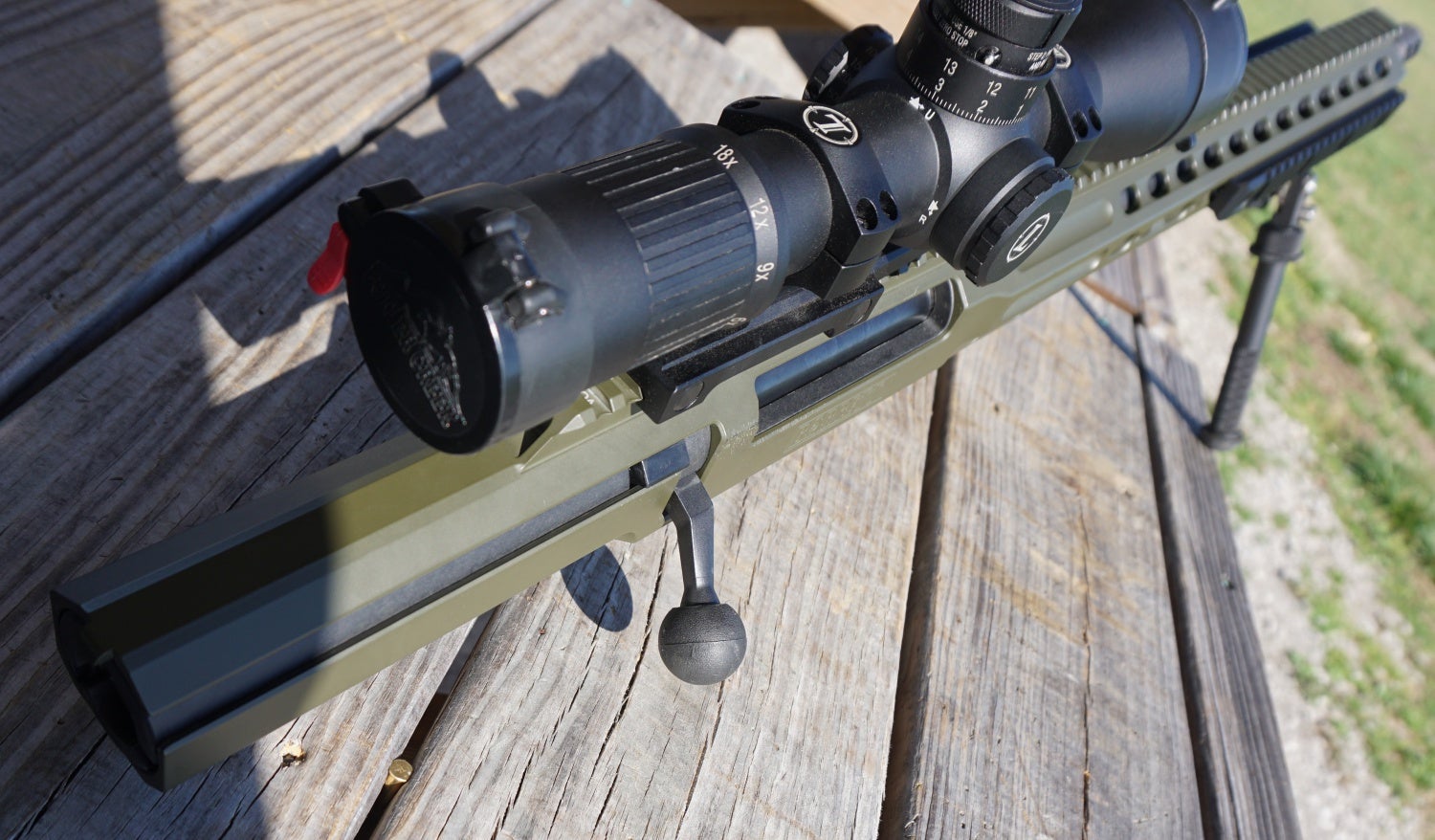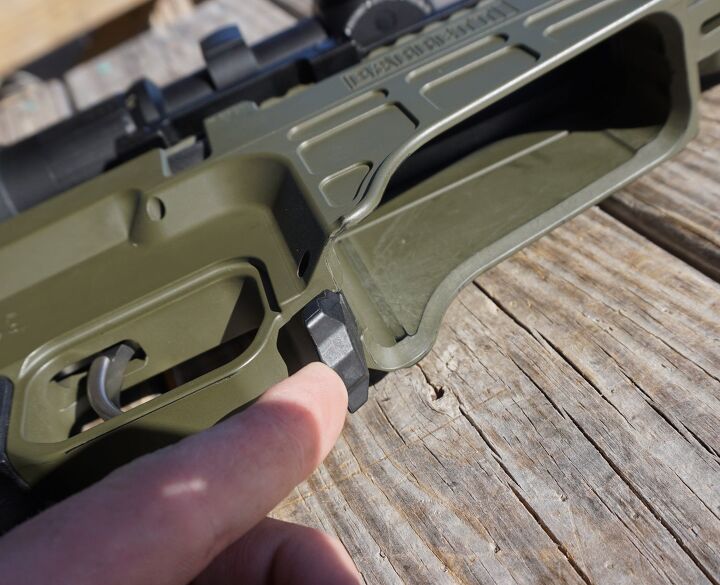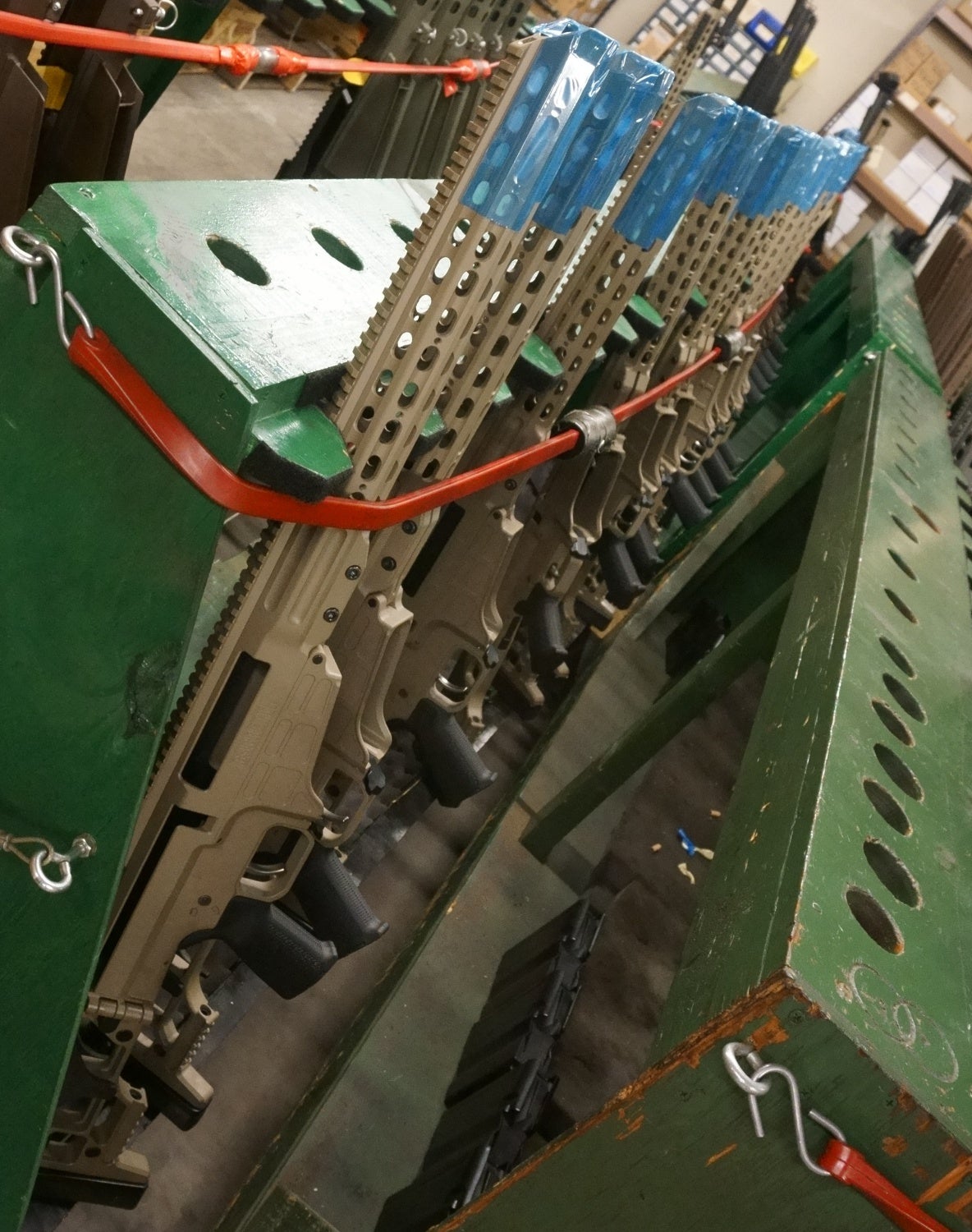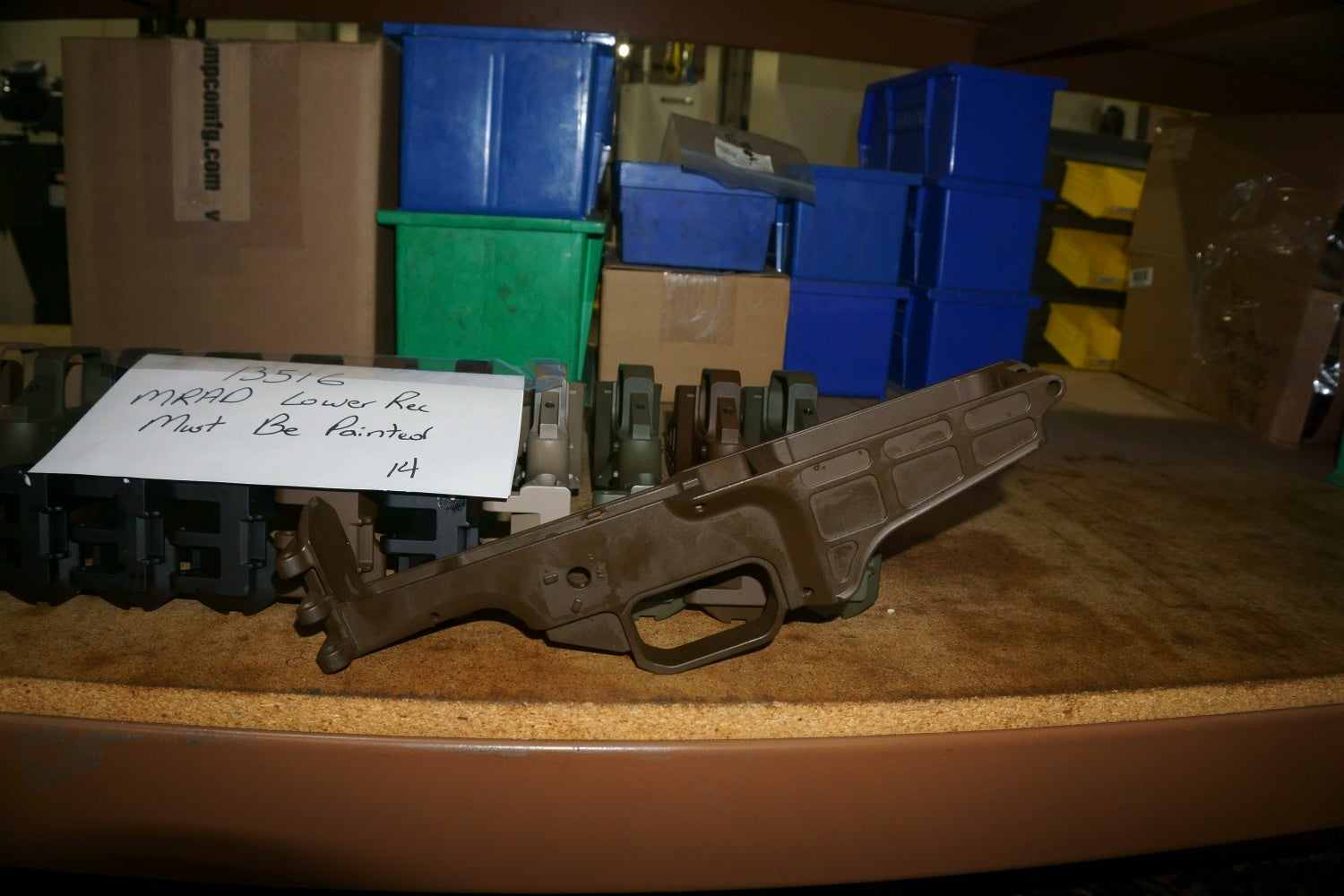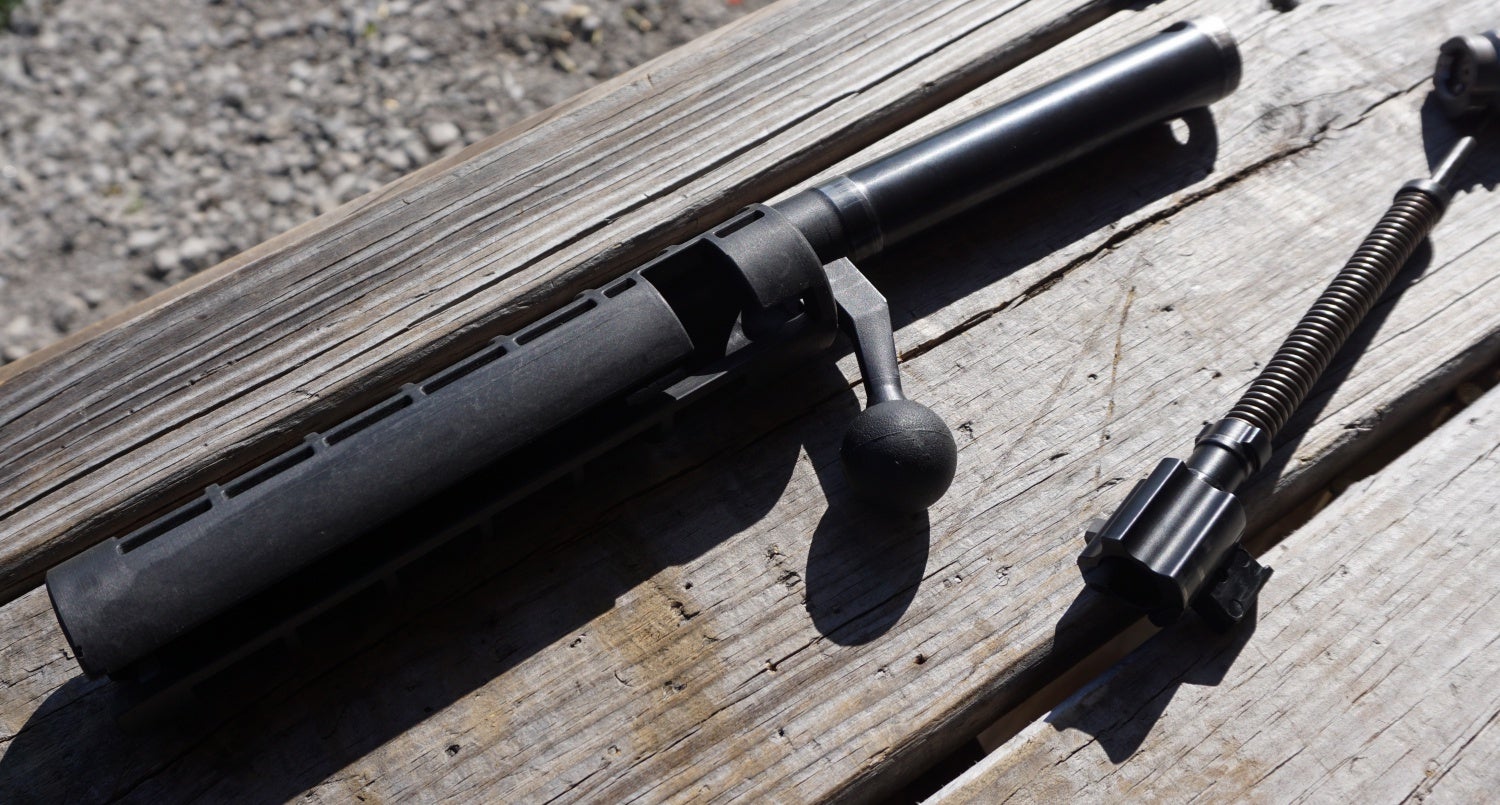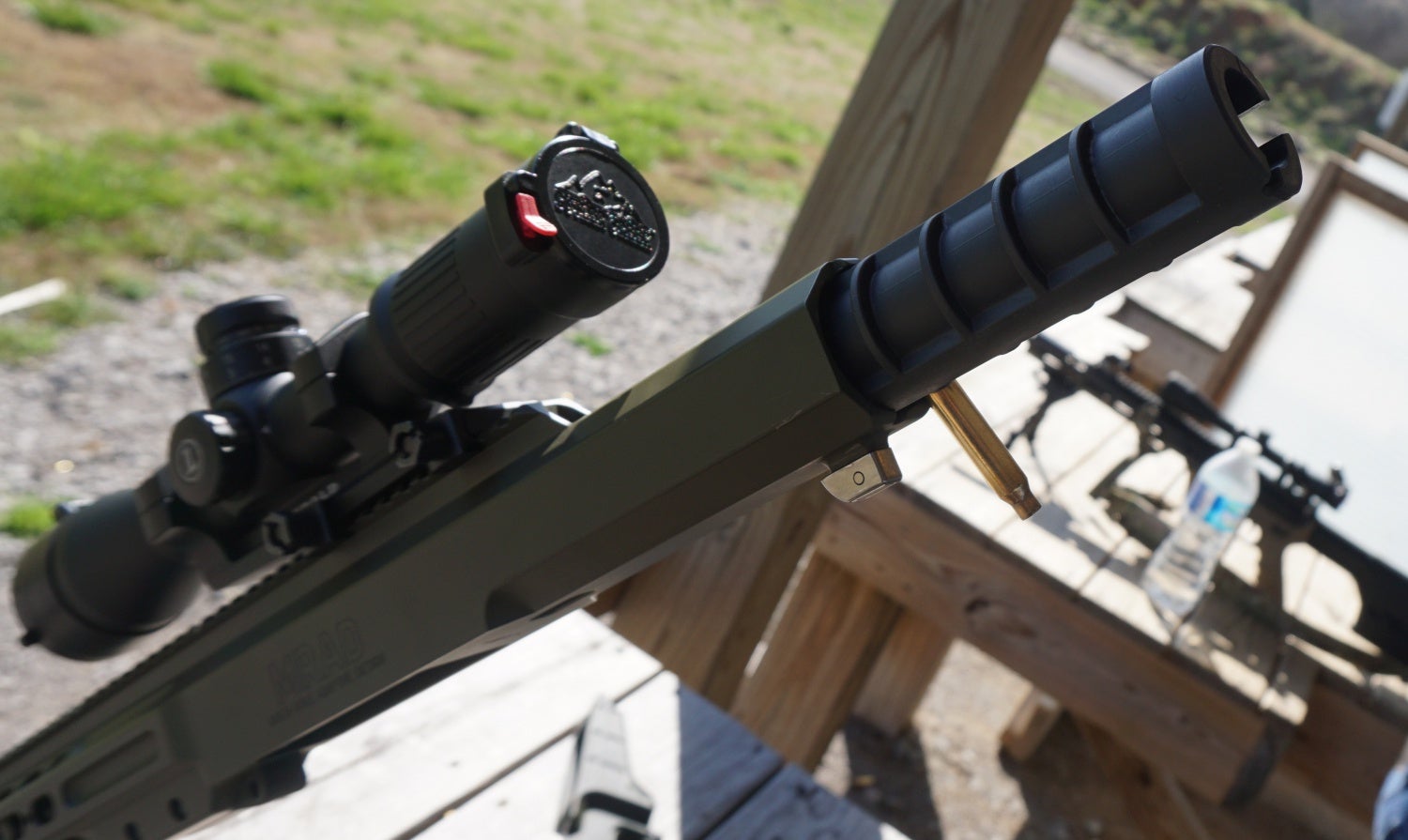The Barrett Multi Role Adaptive Design (MRAD) has been making waves since its inception for the PSR contract competition. Developed from the Barrett Model 98B, it won the NRA’s Rifle of the Year Award in 2012 and is now currently in service with the Israeli and Norwegian militaries. Not too shabby for a brand new design to have already been picked up for service. The rifle comes in a variety of calibers, .338 Lapua Magnum, .300 Winchester Magnum, .308 Winchester, 7mm Remington Magnum, .260 Remington and 6.5 Creedmoor. By switching out the bolt heads and the barrel, users can switch between all three of these calibers within the same chassis. Shooters can also pick a barrel length that ranges from 17 inches to 28 inches as well. For our day at the range, Barrett employees brought out a .308 MRAD with a 17 inch barrel installed. We were shooting at steel targets from 300-500 meters, both from benches and from improvised positions the range had set up.
The history of the MRAD begins with the Model 98B and the interest in the .338 Lapua Magnum in the 1990s, that was really kicked off by Accuracy International with the .338 Lapua Arctic Warfare. Buzz was going around the industry about the potential of the .338 Lapua for long range shooting. Barrett looked into this, and even went so far as to purchase one of Accuracy International’s models to really get a feel on what the better products at the time were made of. This lead to the design on the Model 98, which although never went into production, it paved the way for the Model 98B which was to come out in the early 2000s. Along came the PSR contract, and the MRAD was essentially made for this contract. Barrett lost out to Remington, but the result was that the company had a rifle that it could now enter into the civilian market, with a number of advanced features that might not have been realized on the Model 98B had it not been for the PSR competition.
The primary differences between the Model 98B and the MRAD are the folding stock, multiple barrel conversion system, and the system of attaching the barrel within the chassis. The Model 98B was not built with a folding stock, and the barrels are rigidly affixed within the chassis. In addition, the MRAD has an adjustable length of pull and adjustable cheek rest. All of these differences were a direct result of the PSR competition.
My initial impressions of the Model 98B, when I saw it in print, were not very good. I thought the rifle looked like some odd plastic construction, much like an archangel stock on a Mosin Nagant. I didn’t pay it much heed until I saw the rifle redesigned as the MRAD and being entered in the PSR competition, and then I thought that there might more than meets the eye. When I was able to actually shoot it, and take it apart, my eyes were really opened up, with the innovativeness and sheer simplicity that the MRAD has going for it.
To begin with, the rifle is almost built like an AR of precision rifles. Only in that it disassembles into two halves, and really doesn’t even need to be taken past that, you can break the rifle down “shotgun style” by just removing the rear takedown pin. The receiver is made up of two solid bodies of 7000 series aluminum, almost a solid chassis as it were, with the folding buttstock apart of the lower receiver. The barrel is connected to this chassis via a series of screws that allow it to be converted to any of the other calibers available by also switching out the bolt head. Explaining this process of disassembly is easier shown via video, so watch this segment right here from the company.
Further disassembly is completed by taking out the safety. This is similar to an AR style one, and can be reversed for left handed shooters. The trigger and hammer come out easily as well being one fire control group, really showing the simplicity of the design. Folded, the buttstock covers the bolt handle very well and locks in place, the entire rifle is around 32 inches in length folded. Personally I think the 17 inch barrel set up is my favorite because almost the entire barrel is enshrouded by the chassis, up until the muzzle. The bolt has a sort of polymer shroud that encases it within the receiver. This shroud has cuts in it, that allow dirt to fall into, without it caking up around the inside of the receiver body. When the bolt handle is closed, this shroud falls into place along the cut out that allows the bolt handle to ride back. When the handle is opened, the shroud rotates inside and allows the handle to be worked back to the rear. The pistol grip is an AR style grip, coming from the factory with a Magpul grip installed, but you can instal any grip that fits on an AR, onto the MRAD.
The rifle comes with three picatinny rail segments that are bolted into Barrett’s rail mounting system along the forward sections of the receiver. However on top of the receiver is a full length 20 MOA picatinny rail for the mounting of scopes and night vision devices. From the factory it comes with Atlas bipods, that can lock into place in a variety of angles, in addition to being extendable as well. The rifle doesn’t come with iron sights, but I’m sure the company could put some on if ordered directly from the factory through an FFL. The magazine release button is ambidextrous, and can be activated by the trigger finger while in position. The magazine itself is polymer, and is inserted into the rifle straight up, none of this rocking back and forth nonsense that some magazine fed rifles have to deal with. Magazine capacity is 10 rounds, but this number goes down as the caliber goes up, due to more rounds.
For our days shooting, we were using 167 grain .308 Lapua ammunition from a bench and prone positions. Targets were steel, and were between 300 and 500 meters. Scope was an 18X variable power Leopold. During the course of fire, the rifle performed excellent, any missed shots were on account of human error entirely. Working the bolt was extremely fast, and getting back on target was even faster. This was mostly due to the fact that the entire bolt is inside the receiver, unlike a traditional bolt action rifle where the bolt is actually coming back into the shooters face every time it is worked.
 Your Privacy Choices
Your Privacy Choices

